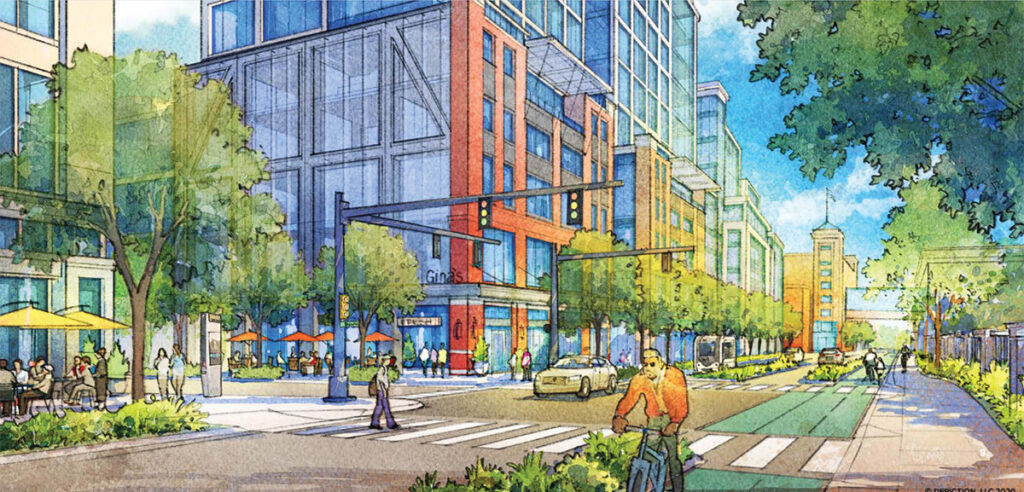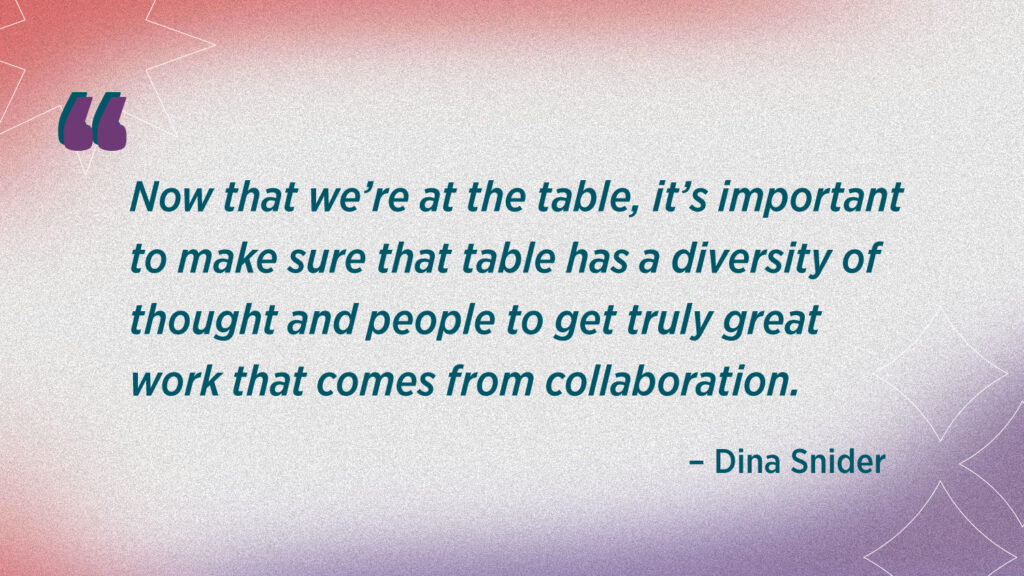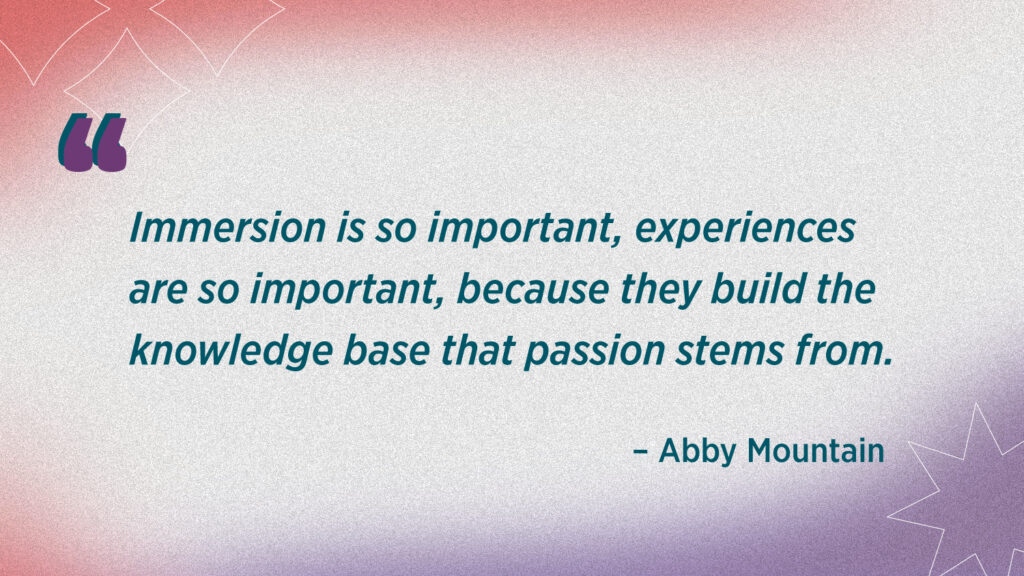In honor of Women’s History Month, we sat down with the two female principals of Strada. Meet Abby Mountain and Dina Snider, who have over 40 years of combined experience in the field and have led Strada to numerous design awards and recognitions. In this interview, we discuss their journey as women in architecture, their leadership philosophy, and their advice for young women who aspire to follow in their footsteps.
When did architecture enter your life? What was your early journey into the profession like?
DS: I wanted to be an architect from childhood, when a friend and I were running around making messes and seeing how the world works. I loved being creative, but also practical. I grew up with sisters, with no brothers to split up our tasks by gender. If something was broken, we learned to fix it. There was nothing at home that held us back, so when I went to high school and saw there was not a women’s soccer team, I just switched to the men’s team. I approached it as I approach most things: by showing up and playing.
When I went to CMU to study architecture, I was lucky to be in a program with a good balance of gender, but I was already well-prepared in taking my place at the table without worrying about who else was there.
AM: I come from a family of DIY-ers, and was obsessed with architecture early. We added on to our house when I was young, and so I’ve always had a soft spot for residential design and renovation of existing spaces. As a kid of the 80s, I adored a “fancy” glass block wall and always made sure to include one for my imaginary clients.
Through high school, my love of both math and art solidified my pathway into architecture. My favorite studios in college focused on how a space can tell stories and create memories. That has translated into my professional work and despite young architects dreaming of creating new buildings, I found that I really enjoy the challenge of renovations and adaptive reuse projects, including master plans, because it is so rewarding to discern how to shift what already exists to enhance and adapt those stories.
What drew you to Strada? Can you share a little about your leadership style and philosophy?
DS: When Strada began, I was working for Strada Principal Al Cuteri at his own architecture firm. I had originally chosen to work for Al because of his mentoring approach to projects. We knew the transformation was happening, and while I wasn’t a partner, I was able to participate in the process and looked forward to working at the fresh firm.
I always want to be approachable and take the time to empower someone through learning. I love taking the time to sit down with a younger designer and go through a list of their questions. The next thing you know, it’s been an hour and we’ve had an enriching conversation with sketching and planning as we’ve worked through problem-solving together. It’s so rewarding to see the people I’ve supported take that support and run with it into their own successes.
Architecture is an ever-changing practice, and Strada’s studio style encourages the constant learning that defines great design. I like to take the teams I collaborate with outside of their comfort zones to encourage them to think differently. I don’t pretend to know all of the answers. I get uncomfortable, too, and that’s a good thing, because it means I’m still learning.
AM: I started at Strada a few days earlier than expected! I was called in to help prepare hand renderings for a proposal submission that ended up being pivotal to Strada’s growth. The other interesting bit of my history with Strada is that I left and came back. I loved Strada, but Strada was all I knew professionally and I wanted to see what other work was being done. I worked at another firm, focused on some different types of projects, and ultimately returned to Strada, secure in my knowledge that Strada was doing the types of transformational work that I wanted to be a part of.
As a leader, I’m pretty informal. I want everyone to jump in and do what needs to be done with confidence, so I make sure I jump in, too. I’m always willing to admit when I don’t know something so that the people around me aren’t afraid to speak up as well. I love to encourage peoples’ strengths while also pushing a growth mindset.
Being on the construction side of things has sometimes been difficult, but I find that the best antidote for feeling like I may be treated differently as a woman is to speak up. “I have things I do every day, you have things you do every day, let’s share our expertise.”
What do you see “trending” in your own designs? Where do you see evolution occurring in our studios?
DS: Sustainability is more than a trend, but it’s definitely at the front of my mind right now. Regenerative design goes hand in hand with my desire to problem-solve, and to be at the table where decisions are made. Implementation is the challenge, but my mindset is to nurture the opportunities in each project. Even a small change, like a low VOC paint, can ripple out to greater wellness. Being in the flow of constantly creating change encourages bigger ideas to take shape.
The evolution in our studio has been in our refusal to accept the “standard.” If something isn’t working, speak up! We should always be trying new things, and investing in ourselves. Sometimes things work, and sometimes they don’t, but what I love to see in our studios is that we embrace the mindset of trying, rather than sticking with “good enough.” I’m particularly impressed with the SWell (Sustainability & Wellness) committee, which is building our knowledge base for sustainable design and encouraging wellness from the buildings we build and renovate to the people living and working within them.
AM: Accessibility is something I’ve become more focused on as I’ve helped my kids navigate the world. Looking at design through the lens of accessibility utterly changes how you view everything. Is that railing my child is hanging over safe? Is that bathroom accessible for strollers and wheelchairs? And then, looking forward, will this better the planet I’m leaving behind for them?
Architecture in general is evolving, with women entering the field and sharing their voices. As Strada grows and evolves, I hope to see more of these women elevated to leadership positions to better represent our studios.

The project I’m closely watching evolve right now is a master plan that will shift 15 acres of space in the middle of Pittsburgh’s East End from leftover land to a true community hub. We’re working through schematic design of the first building now, and the excitement of years of master planning work becoming reality is so energizing. I hope to use this to strengthen our urban design presence and continue shaping the stories of Pittsburgh through great clients like Walnut Capital.
What advice do you have for young women, especially those entering into architecture and design?

DS: I was never one to let being female be an obstacle. There have been so many times when I was the only woman in the room, and I couldn’t let it hinder my getting into that room and staying in it. I didn’t have a mentor to tell me I could be in the room, but now, there are supports and networks out there to understand how to navigate this profession. Now that we’re at the table, it’s important to make sure that the table has a diversity of thought and people to get truly great work that comes from collaboration.

AM: If I could go back and give young Abby some advice, it would be to immerse in the diversity of architecture sooner. I come from small-town Ohio, where a 2 story building was big, and had no idea what commercial architecture was like. I clearly remember being 18 and visiting Frank Lloyd Wright’s Taliesin West in Arizona, and hating it because I didn’t understand what he was doing. Immersion and experiences are so important because they build the knowledge base that passion stems from.
The old phrase “if you love what you do, you’ll never work a day in your life” holds so true. I love what I do, and the balance I strike, so I find joy in my work and my life.
What are you unwinding with right now?
DS: I’m part of a book club, and we’ve been reading Lessons in Chemistry by Bonnie Garmus. I like to have a few books going at a time so I can jump into whatever most interests me at the time. I also enjoy running, especially as spring starts to show up.
AM: As an avid reader, I always have an escapist fantasy novel (or two) at the ready to get lost in another world. I’ve also been enjoying the WNYC Radiolab podcast. They always end up tying together two or three seemingly disparate stories into one common theme. It’s fascinating, quirky, and science-y!
